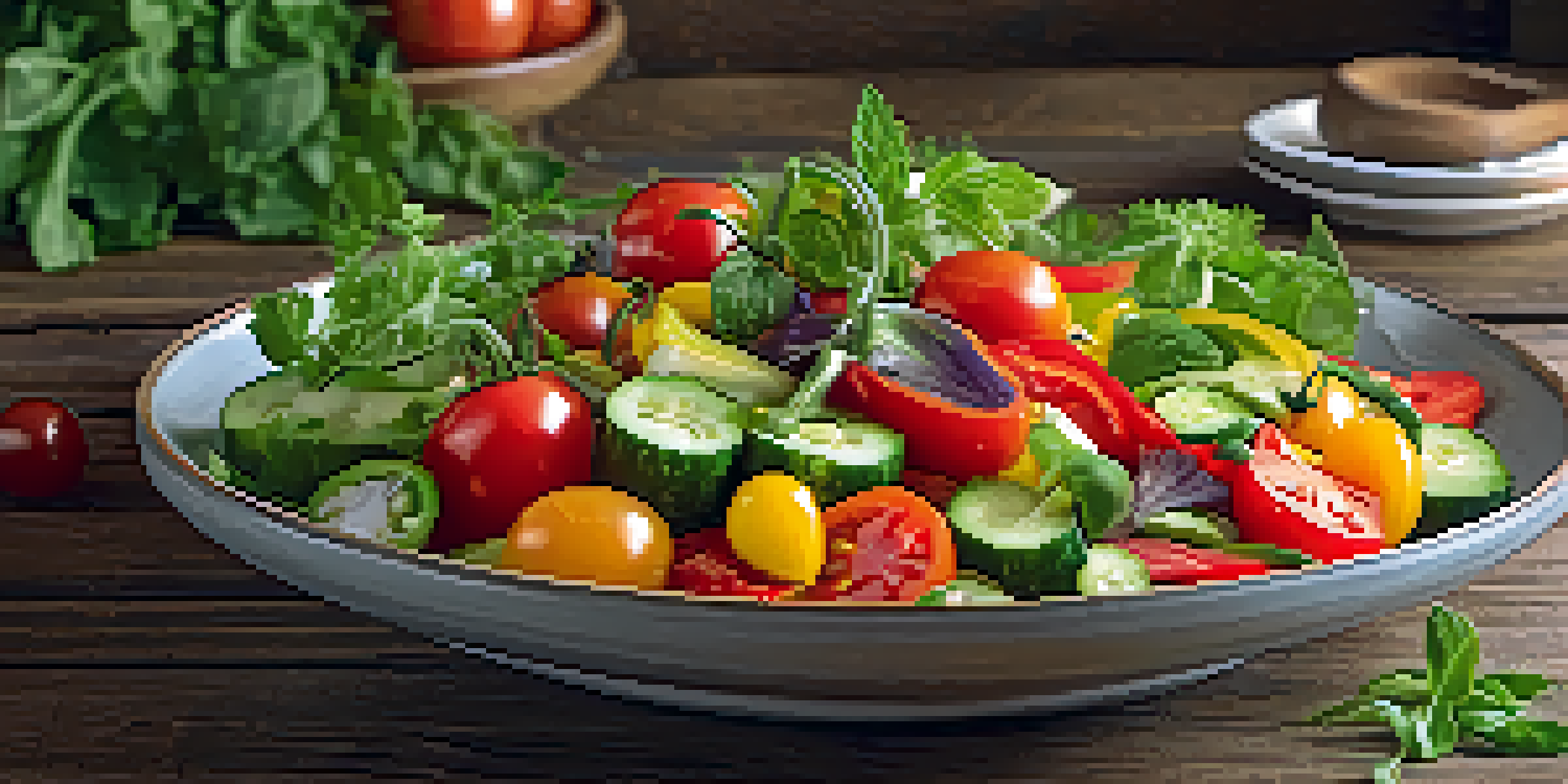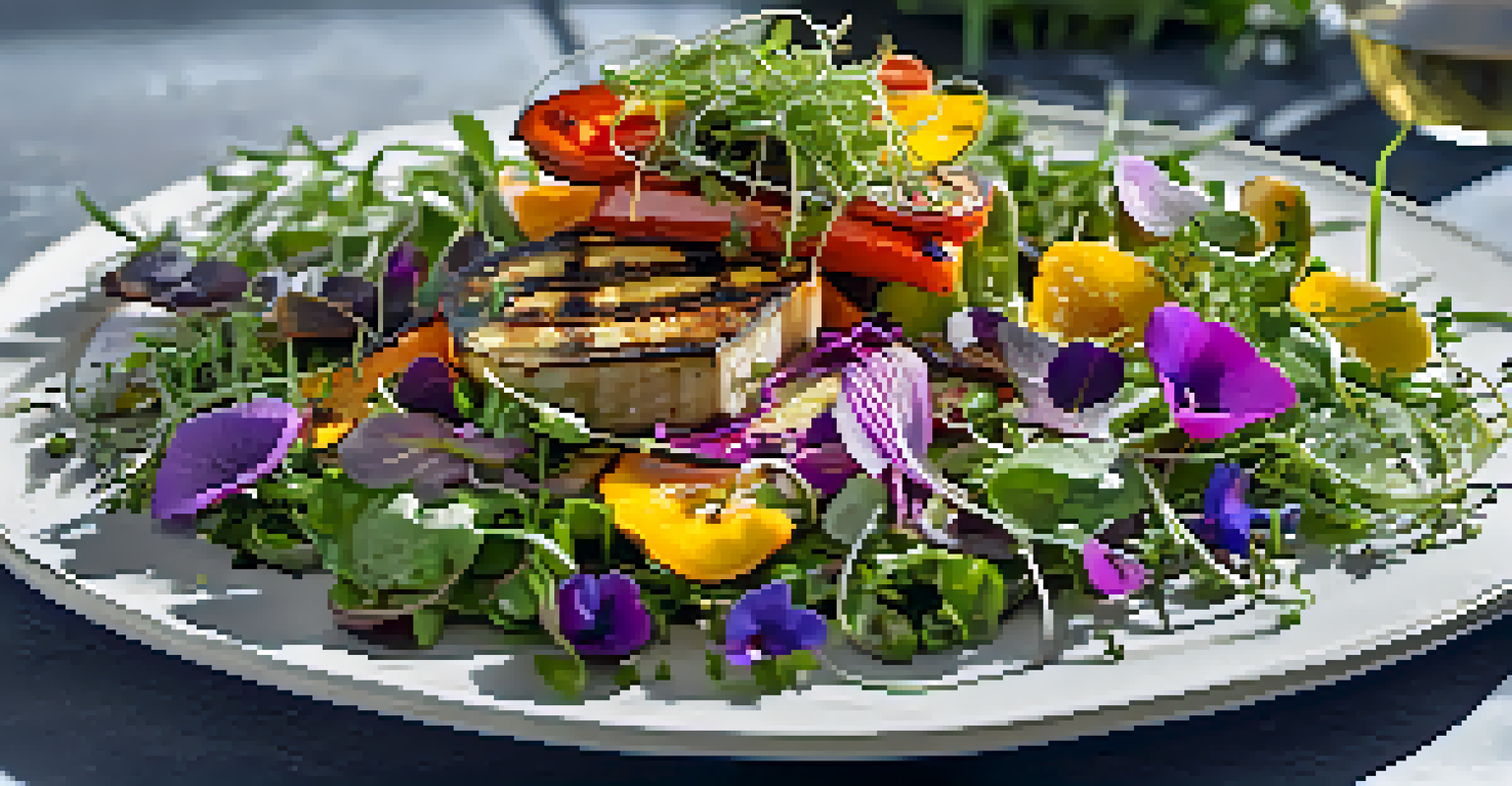Culinary Traditions: Global Views on Raw and Cooked Foods

Understanding Raw and Cooked Foods in Culinary Culture
Culinary traditions often reflect a society's history, geography, and climate. At the core of these traditions lies the debate between raw and cooked foods, which can symbolize various cultural values and beliefs. For instance, raw food diets have gained popularity in recent years, highlighting a movement towards natural and unprocessed ingredients that many believe retain essential nutrients.
Cooking is like love; it should be entered into with abandon or not at all.
Conversely, cooked foods have long been celebrated for their ability to enhance flavors and improve digestibility. Cooking transforms ingredients, allowing for a variety of textures and tastes that many cultures cherish. The debate isn't just about nutrition; it's about the stories, rituals, and connections that food fosters within communities.
Ultimately, understanding the balance between raw and cooked foods can offer a deeper insight into a culture's identity. It reveals how people adapt their diets to their environment, honoring tradition while embracing innovation in the kitchen.
The Rise of Raw Food Movements Globally
In recent years, raw food movements have surged, particularly in Western countries where health consciousness is on the rise. This trend emphasizes the benefits of consuming unprocessed foods, claiming that raw ingredients contain higher levels of vitamins and enzymes. This is evident in the popularity of dishes like sushi, tartare, and salads, where freshness is key.

Culinary enthusiasts often celebrate raw foods as a way to reconnect with nature and simpler living. For instance, raw veganism encourages the use of fruits, vegetables, nuts, and seeds, rejecting anything that’s been cooked above a certain temperature. As such, it promotes a philosophy that aligns with sustainability and environmental awareness.
Raw vs. Cooked: Cultural Significance
The debate between raw and cooked foods reflects cultural values and traditions, showcasing how culinary practices shape identity.
However, the raw food movement isn't without its critics. Some argue that certain foods, like beans or potatoes, can be harmful when consumed raw, highlighting the importance of balance and moderation in any diet. This ongoing conversation underscores the dynamic relationship between what we eat and how we perceive health.
Cultural Significance of Cooked Foods in Different Regions
Cooked foods often carry deep cultural significance, serving as a medium for storytelling and tradition. In many cultures, cooking methods are passed down through generations, preserving not just recipes but also family legacies. For example, in Italian cuisine, the art of making pasta from scratch is a revered tradition that brings families together.
The food you eat can be either the safest and most powerful form of medicine or the slowest form of poison.
Different regions showcase unique cooking techniques that reflect their landscape and available resources. In Asia, steaming and stir-frying are prevalent, while in the Mediterranean, grilling and roasting take center stage. These methods not only enhance flavors but also foster community as people gather around meals prepared with love and care.
Moreover, cooked dishes can symbolize celebration and hospitality. From the elaborate feasts of Ethiopian injera to the comforting stews found in Irish kitchens, these meals tell stories of resilience, culture, and togetherness. Cooked foods thus play an essential role in marking life's milestones and creating lasting memories.
Nutritional Perspectives: Raw vs. Cooked Foods
The nutritional debate between raw and cooked foods is a hot topic among health enthusiasts. Proponents of raw diets argue that cooking can destroy vital nutrients, while supporters of cooked foods claim that cooking can enhance nutrient absorption. For instance, cooking tomatoes increases their lycopene content, a beneficial antioxidant.
In addition, some foods are more digestible when cooked. For example, cooking carrots makes beta-carotene, a precursor to vitamin A, more available to the body. This highlights an essential aspect of nutrition: it’s not solely about what we eat but how our bodies utilize those foods.
Nutritional Benefits of Both Forms
Understanding the nutritional advantages of raw and cooked foods helps individuals make informed dietary choices for better health.
Ultimately, a balanced diet often incorporates both raw and cooked foods. By understanding the nutritional benefits of each, individuals can make informed choices that align with their health goals and lifestyle preferences, fostering a holistic approach to eating.
Regional Variations: Raw and Cooked Dishes
Across the globe, various regions showcase unique dishes that highlight their culinary traditions with raw and cooked elements. In Japan, sashimi represents the raw food culture, where the freshness of the fish is paramount. On the other hand, dishes like ramen showcase the rich flavors developed through cooking.
In Latin America, ceviche exemplifies a popular raw dish, where fish is 'cooked' in citrus juices, creating a delightful blend of fresh and zesty flavors. Meanwhile, the traditional Mexican mole, which requires hours of cooking, combines a variety of ingredients to achieve a deep, rich flavor profile.
These regional variations illustrate how different cultures balance raw and cooked foods in their diets. They reveal how local ingredients and cooking methods shape the culinary identity of a place, emphasizing the diversity of human experience through food.
The Role of Food Safety in Raw and Cooked Foods
Food safety is a critical consideration in the ongoing raw versus cooked debate. Consuming raw foods comes with risks, such as exposure to harmful bacteria or parasites that cooking usually eliminates. This highlights the importance of sourcing quality ingredients and understanding proper food handling practices.
For instance, sushi chefs undergo extensive training to ensure that raw fish is safe for consumption, emphasizing the precision and care required in preparing raw dishes. In contrast, cooked foods generally have fewer safety concerns, as the heat involved in cooking kills off most pathogens.
Food Safety in Culinary Choices
Food safety is crucial when consuming raw foods, highlighting the need for quality sourcing and proper handling practices.
As consumers become more adventurous with their food choices, awareness of food safety practices becomes paramount. Balancing the enjoyment of exploring raw foods with knowledge about potential risks can lead to safer and more enjoyable culinary experiences.
Culinary Fusion: Blending Raw and Cooked Elements
Culinary fusion is an exciting trend that blends raw and cooked elements, creating innovative dishes that celebrate both traditions. Chefs around the world are experimenting with combinations like grilled vegetables served atop a fresh salad or seared fish with a raw salsa. This approach not only elevates flavors but also showcases creativity in the kitchen.
Furthermore, fusion cuisine allows for cultural exchange, as chefs draw inspiration from various culinary traditions. A dish like poke, which originated in Hawaii, combines raw fish with cooked rice and various toppings, highlighting the beauty of blending different culinary practices. These hybrids can lead to new flavor profiles and dining experiences.

Ultimately, culinary fusion reflects a modern approach to food that values diversity and experimentation. As boundaries blur between raw and cooked, diners are invited to explore new tastes and textures, enriching their culinary journey.